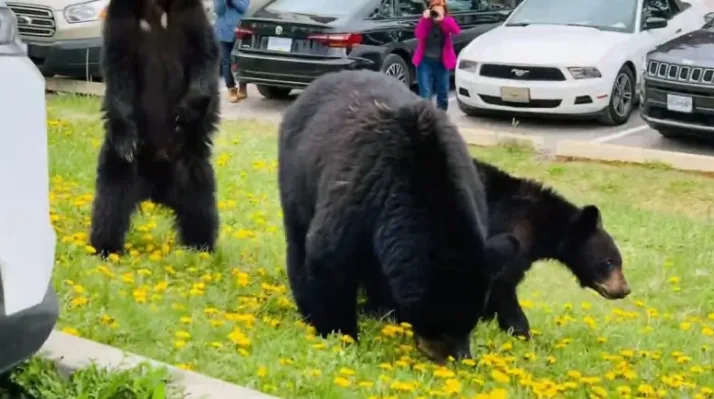
Photographers "harassing" wildlife in Jasper National Park, officials say
Jasper National Park officials are concerned about the lengths some visitors are willing to go this summer to get the perfect photograph of wildlife.
Increasing interest from social media is spurring more aggressive tactics to snap the perfect photo of animals, Steve Malcolm, a human-wildlife conflict specialist with Parks Canada, said in an interview with CBC Edmonton.
"People that aren't familiar with wildlife are following, getting close, chasing, pursuing it into the forest to get that better picture," Malcolm said. "It's happening all over the park."
A compilation of Jasper bear sightings recently posted to YouTube features one incident that park officials responded to, where a number of people can be seen standing outside of their cars, snapping photos of a bear and her cubs by the roadside.
NOT ENOUGH SPACE
With increasing visitors to the park, harassment of wildlife is on the rise, Malcolm said.
"That encompasses people feeding wildlife, which is on the rise, which obviously has some huge detrimental effects on the outcome of that individual," Malcolm said.

A screenshot of a compilation of Jasper bear sightings posted to YouTube shows a number of people standing outside of their cars, snapping photos of a bear and her cubs by the roadside. (YouTube)
Malcolm said he has noticed people "camping out on wildlife," which means staying with an individual animal that's accessing food on the roadside.
"They will just stop on the roadside and spend the entire day following that animal and taking pictures … hundreds of pictures," Malcolm said.
"They're basically following that animal all day. That animal doesn't get any space. It's constantly aware that somebody is with them. And yeah, it's becoming a bit of a concern."
The park has been managing between 50 and 100 wildlife jams — traffic jams that happen when tourists slow or stop their vehicles on busy roads to view an animal — per day, Malcolm said.
This summer, the park discontinued its online bear report, which followed bear sightings, in an effort to give wildlife space and to reduce the wildlife jams.
"Some of these jams can be managed for hours where a lot of the public gets wonderful viewing opportunities and the animal isn't compromised because they're safe distances, everybody stays in their vehicles," Malcolm said.
"It's just the perfect scenario for having everybody's objectives met. But in the situations where we have individual animals that get frustrated or become intolerant of people continually encroaching that space and not providing them the proper space necessary to function, then they start exhibiting aggressive behaviour."
Malcolm said park officials are responding to wildlife jams and educating visitors on how to safely view wildlife.
This article was originally published by CBC News and written by Thandiwe Konguavi.





